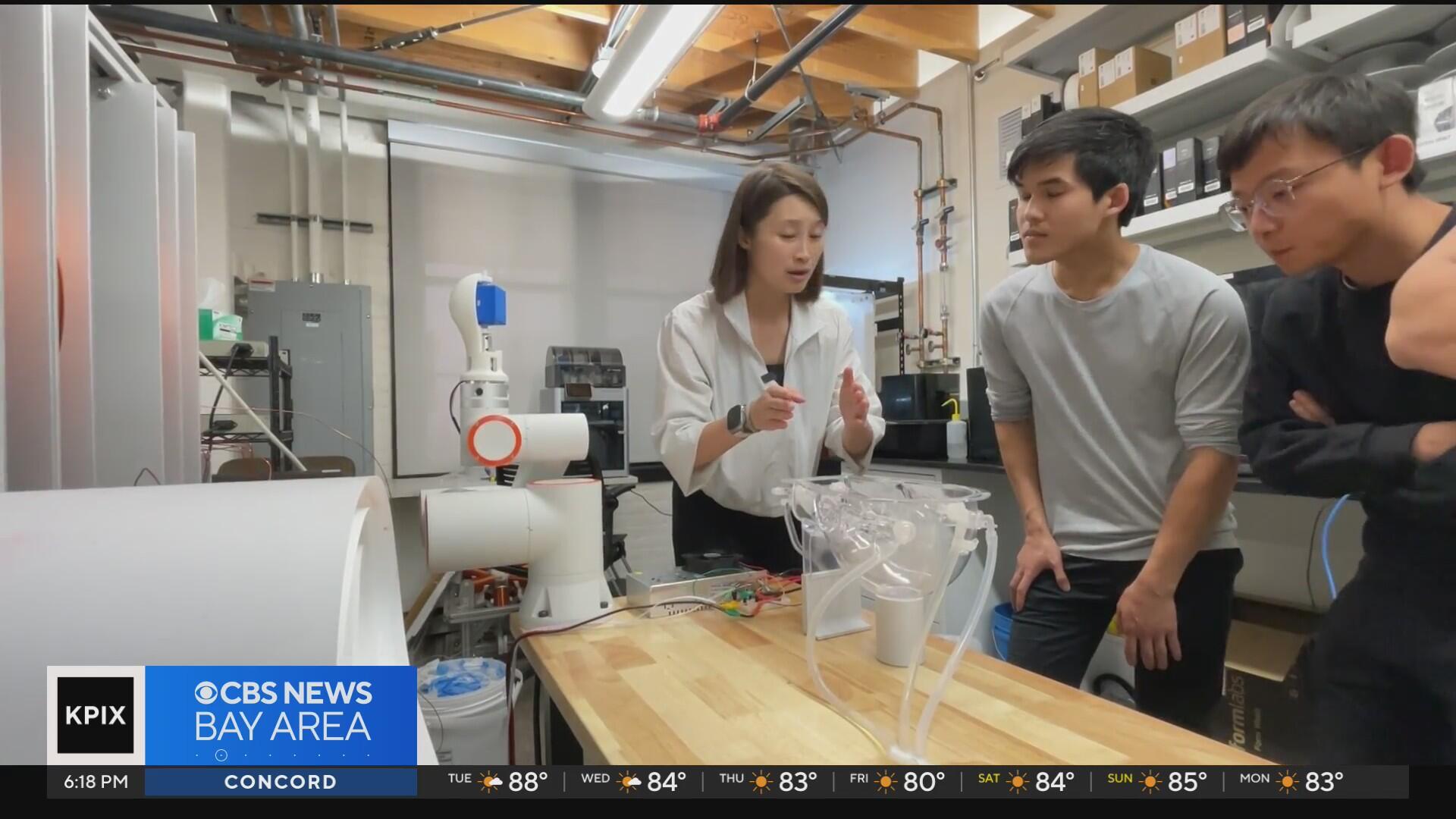Stanford researchers unveil breakthrough for treating blood clots in stroke, heart attack patients - CBS San Francisco
/ CBS San Francisco
Stanford researchers unveil blood clot treatment breakthrough

Stanford researchers have discovered a breakthrough technology to eliminate blood clots to treat strokes, heart attacks, and other clot-related diseases.
Stroke is one of the leading causes of death and disability worldwide. It happens when a clot blocks blood flow in the brain. Time is crucial when treating stroke patients. During a stroke, millions of neurons die every second, causing permanent, irreversible damage to the brain.
The researchers came up with a new, life-saving way to shrink and remove these damaging clots. The technology is called a milli-spinner thrombectomy.
Renee Zhao, assistant professor of mechanical engineering at Stanford University, is leading breakthrough technology in treating stroke patients.
"This new technology is extremely exciting because we physically developed the first mechanism to shrink the size of the clot, so we can shrink the clot from its original size to just 5% of its original volume," said Renee Zhao, assistant professor of mechanical engineering at Stanford University.
Currently, the only way to treat stroke patients is to either inject a tissue plasminogen activator (tPA), a chemical to dissolve the clot, which only works in the first few hours. The clot can then be removed through aspiration thrombectomy, sucking it out like a vacuum machine or through mechanical thrombectomy stent removal to pull out the clot. The problem with both cases is that the clot can easily break apart, fragmenting into smaller pieces that could move into extremely difficult places to reach.
Zhao said their the milli-spinner thrombectomy invention actually changes the microstructure of the clot.
"This is very similar to the microstructure of a clot," said Zhao. "It's a bunch of fiber networks, and it's very loosely distributed. And now what the spinner is doing is that when it rotates, it generates a sheer force. It's like my palm applying a sheer force just like that, so it densifies the fiber network. Eventually, what we see is a highly-densified fiber core."
The incredible thing is that Zhao and her researchers were completely surprised by their invention, never expecting to see the clot transform before their eyes.
"Interestingly, we found a very exciting phenomenon," said Zhao. "We physically saw the clot start to turn white because a clot is red and it has all the red blood cells in the fiber network, but it turned white! That's bizarre! Basically, we've never seen anything like that."
"The first step is I'm going to load our milli-spinner into the catheter," said Stanford 4th-year Ph. D. student Yilong Chang. "Here's what our milli-spinner looks like. It's 1.2 millimeter in diameter. It's very small. It has a unique geometry with a hole in the front and four slits on the side."
Researchers gave us a demo of the milli-spinner in action, showing us exactly how it works and how quickly it can remove a clot.
"Now I still feel this mechanism is not something that someone can easily come up with a clot treatment strategy by extracting the fiber," said Zhao. "Nobody would think of that, so the key point of the way we do research is always feel free and open to the unexpected findings, and they will always give us something that is beyond imagination!"
The spirit of Zhao's lab is one of curiosity, creativity and exploration. She said true innovation comes when you embrace the unexpected. It's this passion that drives the advancements of her lab's impressive scientific discoveries.
Zhao's new technology, published last month in the scientific journal Nature, is more than twice as effective as current techniques.
Zhao and her team of researchers are hoping to perform their first trial on a human next year.
Bay Area native Mary Lee joined KPIX 5 in February of 2018.












